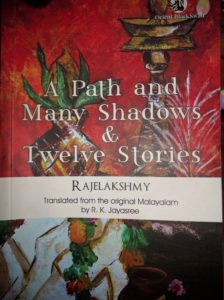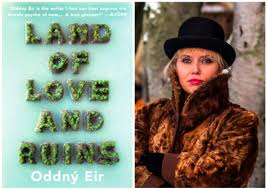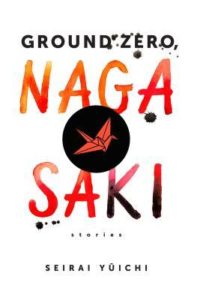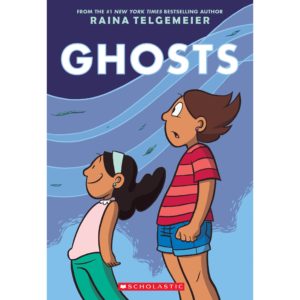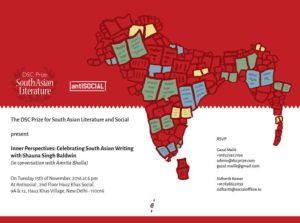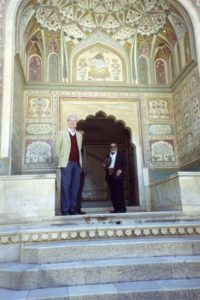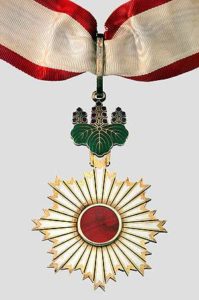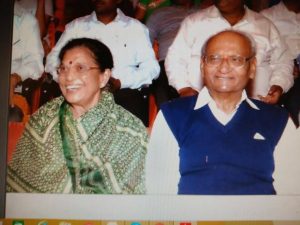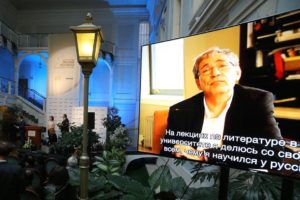An extract from “Indian Genre Fiction”
Indian Genre Fiction: Pasts and Present Futures (eds. Bodhisattva Chattopadhyay, Aakriti Mandhwani and Anwesha Maity) is a fascinating collection of essays. There are articles on popular fiction in late colonial Tamil Nadu, to novels of Urdu, 19th-century Bengali chapbooks, science fantasy of Leela Majumdar and Sukumar Ray, Hindi pulp literature, retelling of the Mahabharata in Krishna Udaysankar’s The Aryavarta Chronicles and Amruta Patil’s Adi Parva. But the essay that I read and re-read was Ira Pande’s tremendous “Hearts and homes: A perspective on women writers in Hindi”. Being the daughter of the very popular Hindi writer Shivani and a fluent speaker in English and Hindi, Ira Pande shares her fascinating perspective on inhabiting the Hindi literary world and what it means being bilingual.
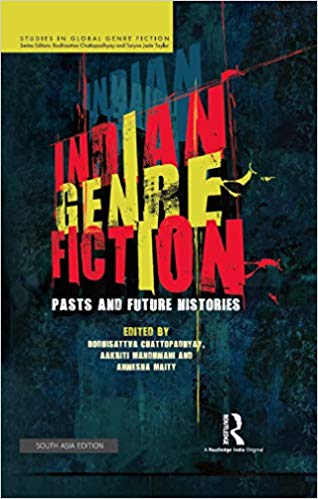
With the permission of the publishers, Routledge, Taylor & Francis Group, here are two extracts from this brilliant essay. (pps. 94-95 and 96-97)
Allahabad in the ’60s was home to some of the greatest writers of those times. Harivansh Rai Bachchan had left Allahabad for Delhi by then, but there were other more famous chhayavad poets still around (Sumitranandan Pant, Mahadevi Verma and Nirala), Firaq Gorakh-puri, Amrit and Sripat Rai (Premchand’s sons, both writers and publishers), Ilachandra Joshi, VDN Sahi and Usha Priyamvada, to name just a few. And of course, there was Shivani. However, along with others of her tribe, such as Salma Siddiqi and Mannu Bhandari, her kind of writing was passed off as romantic fluff or domestic sagas that housewives ordered by mail as part of a gharelu (domestic) library scheme. The very popularity of these women writers became a weapon to use against their literary output. To the supercilious self-styled critics who pronounced judgment on what was to be considered accept-able as literature, this space was only meant for those who wrote for a different audience, one that had a sophisticated palate developed on the ‘modern’ fare of European and contemporary American fiction. Certain subjects were taboo in this high-minded world: romance and bourgeois lives headed this list.
Somewhere by the ’70s, then, the small town became an object of ridicule: it was valourised in romantic literature and cinema but actually hated and mocked at in the real. Small wonder then, that its inhabitants (who suffered from a crippling form of low self-esteem since birth) ran into hiding and tried to ape the big-city culture by writing, speaking and dressing like the metropolitan sophisticates they yearned to become. When this happened, the country lost all those delightful rivulets that fed the creative river of the Grand National Dream. The homogenisation of culture took over: slogans replaced feelings. The joy went out of fun as its definition changed into something wrought by high-minded nationalist agendas. Political correctness has a lot to answer for.
Upon reflection, it appears to me that Shivani’s most prolific literary output and some of her most memorable and popular novels date to the years when Hindi magazines were avidly read across North India. Among these, Dharmyug (edited then by the formidable Dharmvir Bharati, a widely respected novelist and dramatist) occupied pride of place. Published by Bennett and Coleman (referred to henceforth as B&C), its owners (Sahu Jain and Rama Jain) promoted creative writing and later endowed the Gyanpeeth Award, the first privately endowed prestigious literary award for writers in various Indian languages. The Bennett and Coleman Group (later known as the Times of India group) also brought out a clutch of other magazines. Among these were Sarika (contemporary Hindi writing, edited by Kamleshwar) and Dinaman (a political and economic weekly, edited by Agyeya), both respected for their content and editorial gravitas. Filmfare, a film magazine, and the Illustrated Weekly of India were their popular English-language publications. The Hindustan Times group, owned by the Birlas, published Saptahik Hindustan (as a rival to Dharmyug), Kadambari (as an alternative to Sarika) and vied with each otherto publish serials by the most popular Hindi writers of those days. Throughout the ’50s and ’60s, there was not a single library or reader in North India that did not subscribe to these magazines.
Almost all of Shivani’s novels – certainly her most popular ones – were first published as serials in one or the other magazines mentioned above. Her most well-known novel, Krishnakali, published as a serial in Dharmyug in the ’60s, was later published as a novel by Gyanpeeth (the publishing house run by the B&C group). In addition to these magazines, two others (Navneet and Gyanoday) I can recall from then were modelled on the popular American publication, Reader’s Digest. Shivani’s travelogues, essays and memorial tributes were regularly published in these Hindi digests.
….
Naturally, the serialised novel had its own effect on the writing it spawned. Fans wrote furious letters to Shivani when she betrayed their hopes (such as by killing off a character) or when she did not spend enough time on a particular strand of the narrative. This close bond between writer and reader was perhaps what contributed to the intimacy that readers developed over the years with their favourite writers. My sister Mrinal Pande (who edited Saptahik Hindustan in the ’90s) recalls how typists vied with each other to type out Shivani’s (always) handwritten manuscript when she sent in a fresh instalment so that he/she would be the first to read it! The circulation of magazines jumped by as much as 55 per cent when her novels were being serialised and siblings fought with each other to grab the magazine to read it first when it was delivered to private homes. Often they tore the pages out so that they could share it among themselves.
What gave this genre its enormous reach and popularity was that these stories were significant documentaries. I would say that that it was reality fiction based on real-life characters and episodes and invisible to the writers based in our up-and-coming metros who consciously distanced themselves from these provincial lives to become more acceptable to a wider, international literary world. This is a fact often overlooked when tracing the evolution of Hindi writing. As Vasudha Dalmia’s book on fiction and history reveals, novels located in Allahabad, Agra, Aligarh, Banaras or Lucknow give us an insight into the social landscapes that were shaping middle-class lives in the ’50s and ’60s.2 Beneath the romantic tales of young women and men were rich subplots that reveal the gradual breakup of orthodox joint families, the effect of education on the emancipation of women in provincial India and the effect of migration from small towns to industrial cities. The language of everyday conversation in middle-class homes and amongst families, the social terms of exchange between men and women, workers and employers are important markers of a world we seek today and cannot find because it no longer exists. What are often dismissed as kitchen tales and romantic fiction stood firm on a foundation because it was supported by religion and ritual, food and taboos, folk remedies and aphorisms that nourished clans and villages. In the tightly packed houses of our old shahars that were separated by narrow lanes, the smells and sounds that travelled across neighbours became rich lodes of narratives that had the authenticity of real lives. The bonds between Hindu and Muslim homes, or between upper- and lower-caste settlements were strong threads that wove the fabric of our social communities. A deep suspicion of the other community was balanced by an equally strong love for individual men and women. Look for these common narrative strains and you will find them in all writers who lived and thrived in little India.
3 Feb 2019

